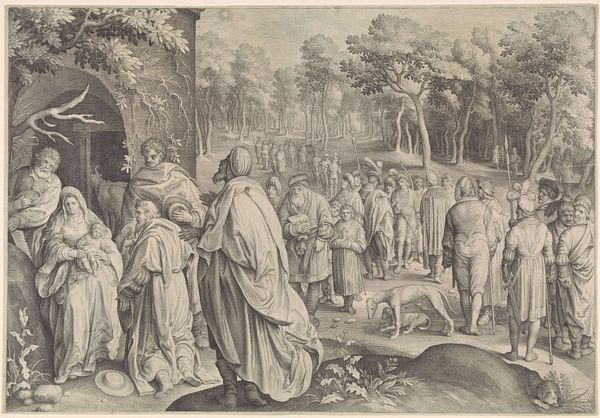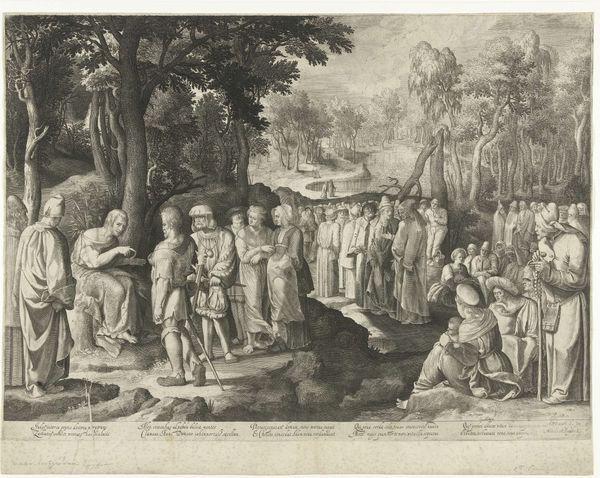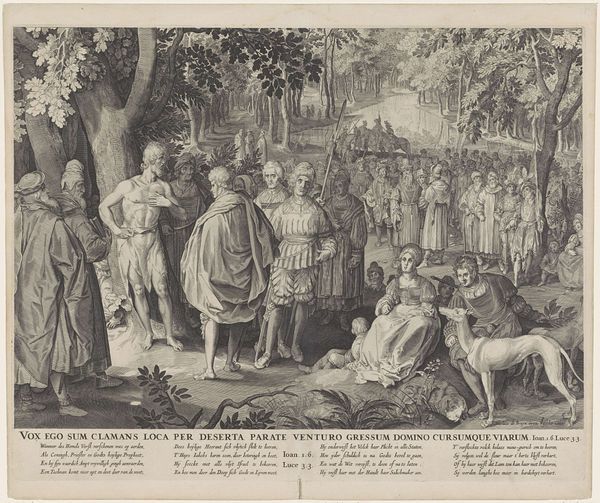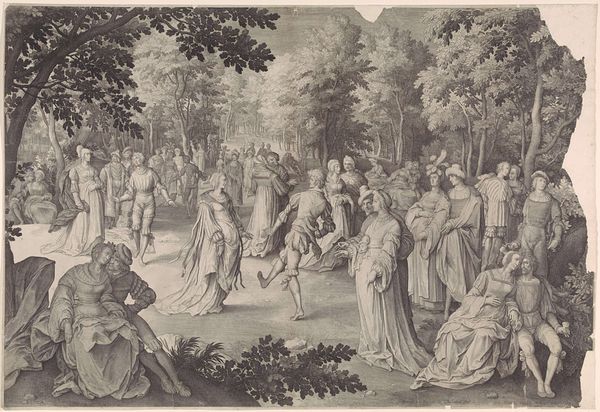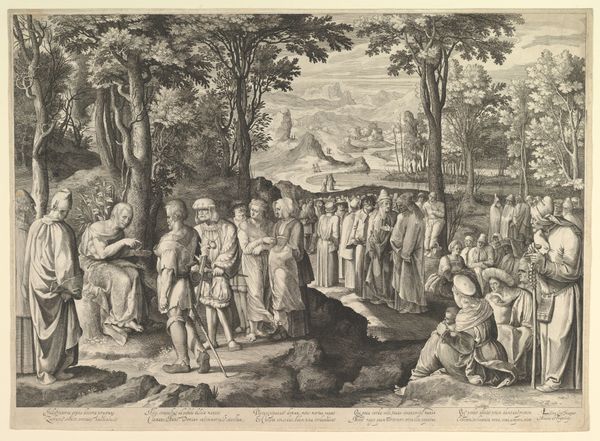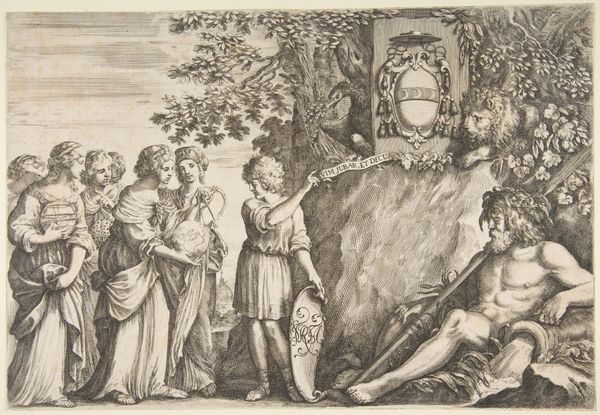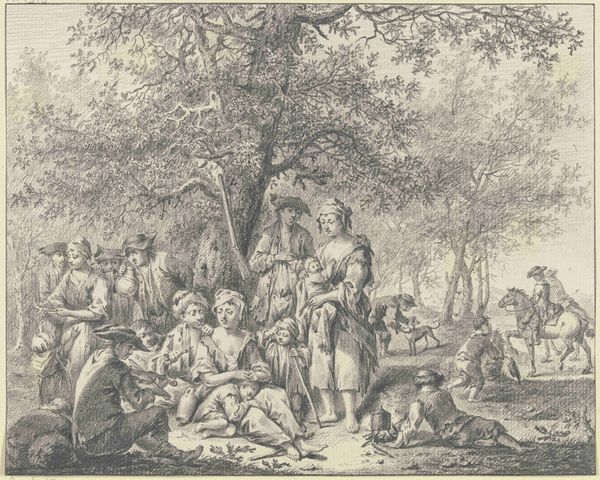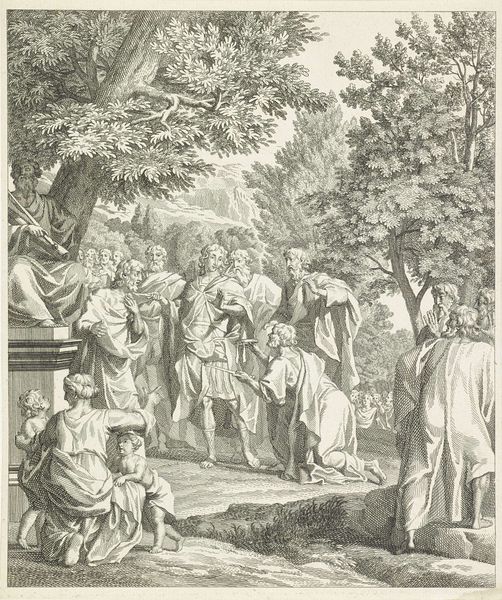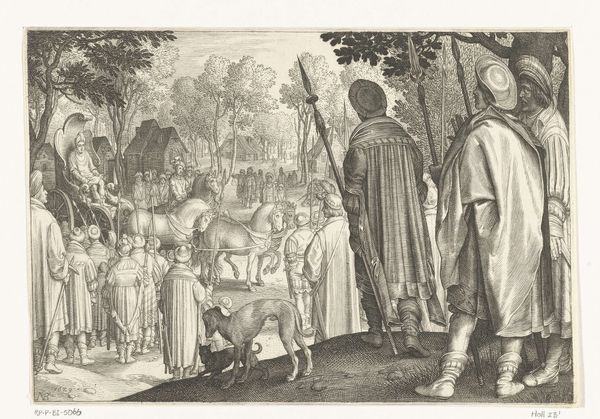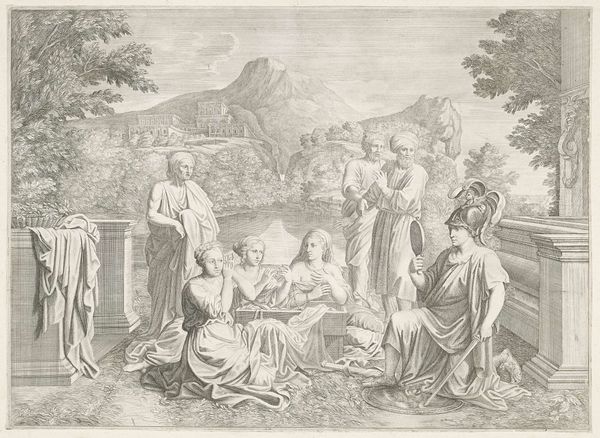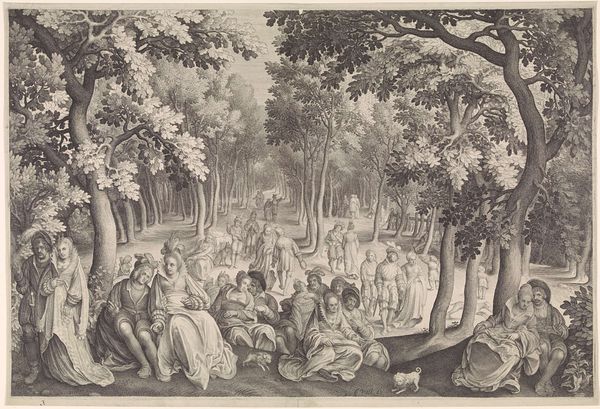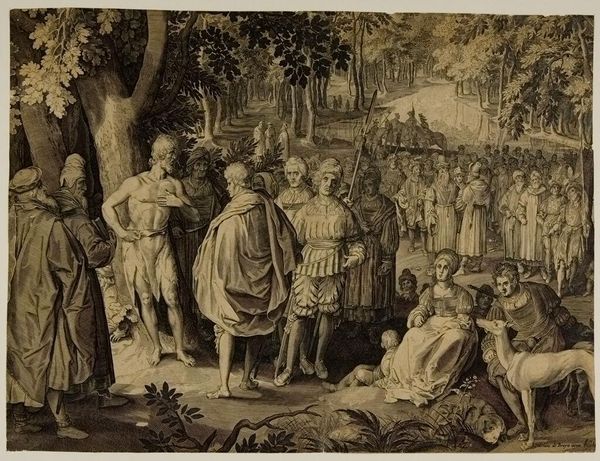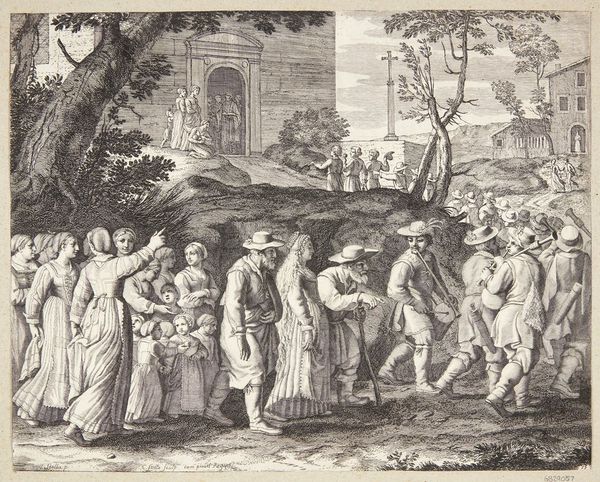
print, engraving
#
narrative-art
# print
#
landscape
#
figuration
#
genre-painting
#
history-painting
#
northern-renaissance
#
engraving
Dimensions: width 690 mm, height 462 mm
Copyright: Rijks Museum: Open Domain
Curator: The scene feels both meticulously crafted and strangely serene, doesn't it? Editor: Indeed. I am struck by how skillfully Nicolaes de Bruyn wields engraving in "Prediking van Johannes de Doper" from 1619. You can almost feel the forest floor underfoot. Curator: It's the texture he coaxes from the metal, a directness to the act of mark-making. I mean, you've got the obvious foreground, but there’s real labor embedded in that process of hatching, and creating those dense layers in the background. Each figure emerges because of the hand. How were these engravings received in the public sphere? Were they considered readily accessible artworks? Editor: Prints such as this circulated widely, fostering a visual culture deeply entwined with religious and moral teachings. The Rijksmuseum houses this particular engraving today, but back then, consider its original social function; religious instruction, moral guidance, artistic expression—these prints carried significant weight in public discourse, especially given that they were comparatively affordable. Curator: It’s interesting to think about the materials again – copper plates, ink, paper - versus the monumental, biblical weight the image is designed to carry. It democratizes religious narrative, but by employing costly artistry. This feels very deliberate, a tangible product accessible to an emergent, moneyed, mercantile class. Editor: Absolutely, we must acknowledge the role of institutions, like the Church and wealthy patrons, in commissioning and disseminating such images. But also we need to realize the power these images have once they are dispersed. The Reformation saw a massive surge in printmaking and circulation, challenging the singular narratives the Church traditionally maintained. Seeing art, teaching, being inspired, and spreading knowledge would've been deeply affected. Curator: So, we can see the distribution as both a mode of religious indoctrination and a subversive mode for exchanging nascent ideas? That sort of paradox is part of the point here. What really strikes me about de Bruyn's approach is the interplay of process, production, distribution. All are intertwined. Editor: Precisely, understanding the historical context illuminates how artworks function beyond mere aesthetics; they actively participate in societal shifts and dialogues. That interplay you mentioned created fertile ground for social and cultural change. Curator: A remarkable print, especially considered from our distinct perspectives, isn’t it? Editor: Agreed. "Prediking van Johannes de Doper" encapsulates both the power of visual communication and its integral connection to societal transformations.
Comments
No comments
Be the first to comment and join the conversation on the ultimate creative platform.
